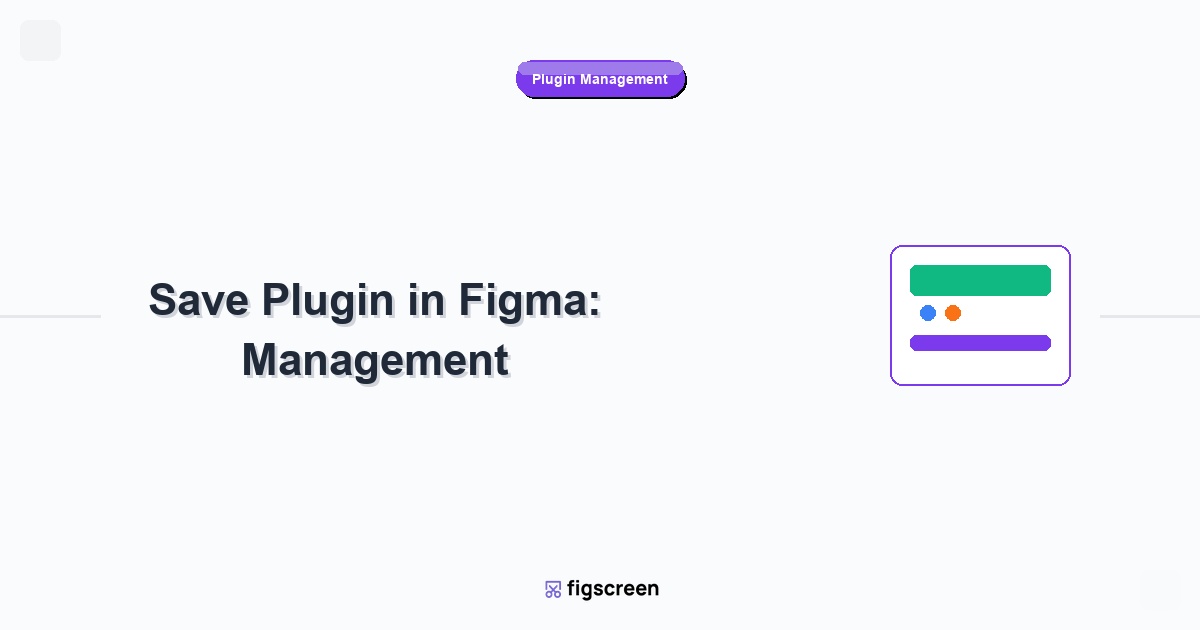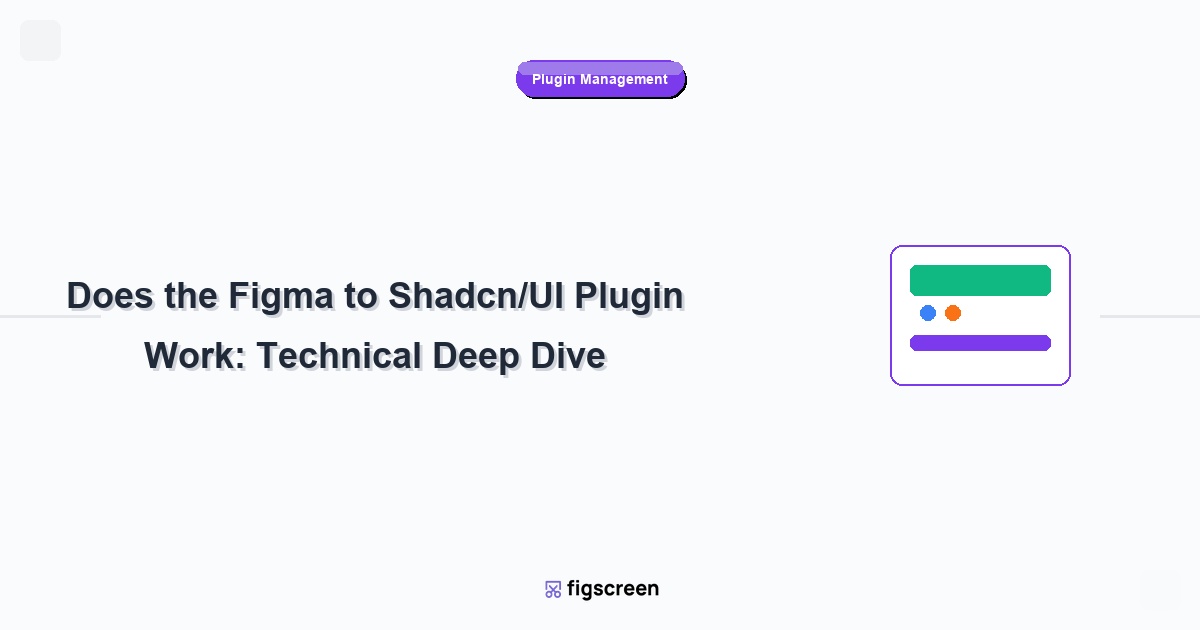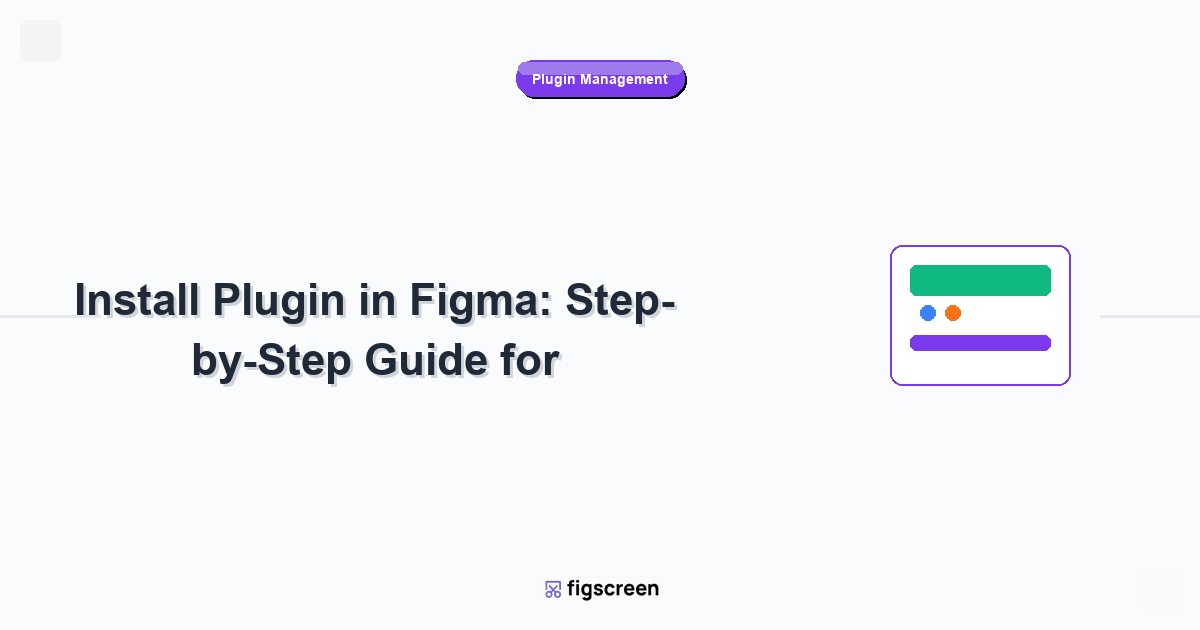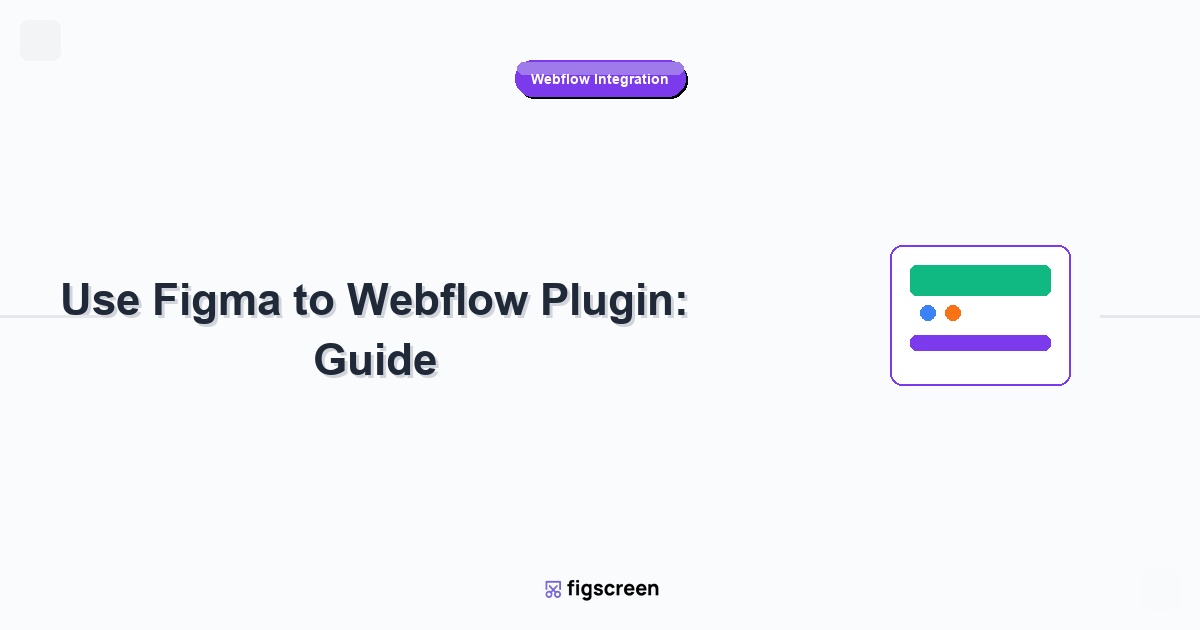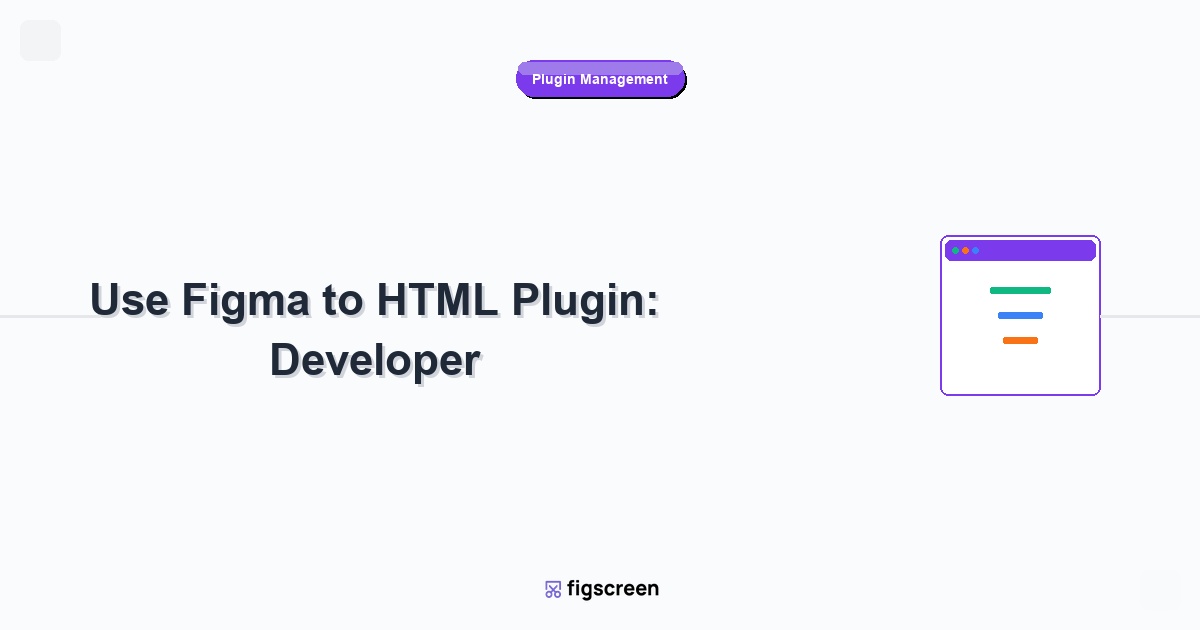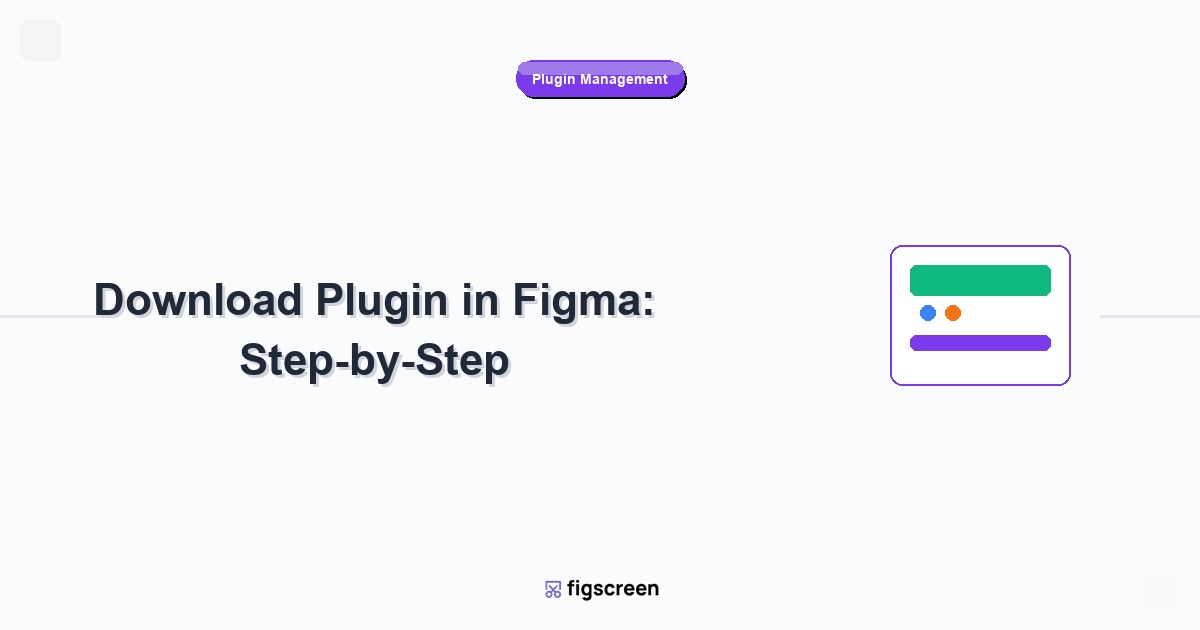Understanding how to save and manage plugins in Figma is crucial for maintaining an efficient design workflow. With Figma’s UI3 interface, plugin management has become more sophisticated, offering better organization and workflow optimization features. This comprehensive guide will teach you everything about saving plugin configurations, managing your plugin library, and optimizing your workflow for maximum productivity.
Understanding “Saving” in the Figma Plugin Context
When we talk about “saving plugins” in Figma, we’re referring to several different concepts:
- Installing and Keeping Plugins – Adding plugins to your permanent toolkit
- Saving Plugin Settings – Preserving custom configurations and preferences
- Organizing Plugin Collections – Managing your plugin library effectively
- Workflow Optimization – Creating efficient plugin-based workflows
How Plugin Installation Works (Permanent Saving)
The Installation Process
When you install a plugin, Figma automatically “saves” it to your account:
- Browse the Community – Find plugins in Figma’s Community tab
- Click “Install” – The plugin is permanently added to your account
- Access Anywhere – Installed plugins are available across all your files
- Automatic Updates – Figma manages plugin updates automatically
Important: Once installed, plugins remain in your account until you manually remove them, regardless of which device or browser you use to access Figma.
Plugin Storage Locations
Your installed plugins are stored in multiple places:
- Figma Cloud – Plugin list synced to your account
- Local Cache – Plugin files cached locally for faster loading
- User Preferences – Individual plugin settings and configurations
Managing Plugin Settings and Preferences
Accessing Plugin Settings
Many plugins offer customizable settings that are automatically saved:
- Open the Plugin – Launch your plugin from the Actions menu
- Look for Settings – Find the settings icon (usually a gear ⚙️ or menu ☰)
- Configure Preferences – Adjust settings according to your workflow
- Apply Changes – Settings are typically saved automatically
Common Plugin Settings
Most plugins save these types of preferences:
- Default Parameters – Preferred sizes, colors, or formats
- Workflow Preferences – How the plugin behaves during operations
- Integration Settings – Connections to external services or APIs
- Display Options – Interface preferences and layout choices
Organizing Your Plugin Library
Creating a Logical Plugin Structure
While Figma doesn’t offer plugin folders, you can organize mentally by purpose:
- Daily Use Plugins – Tools you use in every project
- Specialized Tools – Plugins for specific project types
- Experimental Plugins – New tools you’re testing
- Integration Plugins – Tools that connect to external services
Plugin Naming and Recognition
To quickly identify and access your plugins:
- Learn Plugin Icons – Familiarize yourself with plugin visual identifiers
- Memorize Key Names – Remember the names of your most-used plugins
- Use Search Effectively – Know partial names for quick search
- Note Plugin Functions – Remember what each plugin does best
Best Practices for Plugin Management
Regular Plugin Maintenance
Keep your plugin library clean and efficient:
- Monthly Reviews – Assess which plugins you actually use
- Remove Unused Plugins – Uninstall plugins you haven’t used in 3+ months
- Test New Plugins – Try plugins on test files before using in production
- Monitor Performance – Remove plugins that slow down Figma significantly
Strategic Plugin Selection
Choose plugins that complement your workflow:
- Avoid Overlap – Don’t install multiple plugins that do the same thing
- Quality over Quantity – Better to have 10 excellent plugins than 50 mediocre ones
- Check Maintenance – Prefer actively updated plugins
- Consider Team Needs – Install plugins your entire team can benefit from
Saving and Sharing Plugin Workflows
Creating Plugin Workflows
While you can’t save plugin sequences directly, you can create systematic approaches:
- Document Your Process – Write down your typical plugin sequence
- Create Templates – Set up files with common plugin configurations
- Use Consistent Naming – Name layers and components for plugin compatibility
- Practice Sequences – Build muscle memory for common plugin chains
Team Plugin Management
For team consistency:
- Create Plugin Lists – Document essential plugins for your team
- Standardize Settings – Agree on plugin configurations
- Share Best Practices – Document how to use key plugins effectively
- Regular Team Sync – Ensure everyone uses compatible plugin versions
Advanced Plugin Management Techniques
Plugin Performance Optimization
Optimize your plugin setup for best performance:
- Limit Concurrent Plugins – Don’t run too many plugins simultaneously
- Close Unused Plugins – Close plugin panels when not in use
- Monitor Memory Usage – Be aware of resource-intensive plugins
- Update Regularly – Keep plugins updated for optimal performance
Plugin Data Management
Understanding how plugins handle your data:
- Local Storage – Some plugins store data locally in your browser
- Cloud Storage – Others sync settings to cloud services
- Privacy Settings – Review what data plugins access and store
- Backup Important Settings – Document critical plugin configurations
Troubleshooting Plugin Saving Issues
Common Plugin Problems
If plugins aren’t saving properly or disappearing:
- Clear Browser Cache – Old cache can cause plugin issues
- Check Internet Connection – Plugins need internet to sync properly
- Restart Figma – Close and reopen Figma to refresh plugin list
- Update Browser – Ensure you’re using a supported browser version
Plugin Settings Not Saving
If plugin configurations keep resetting:
- Check Browser Permissions – Ensure Figma can store local data
- Disable Ad Blockers – Some blockers interfere with plugin storage
- Try Incognito Mode – Test if browser extensions are causing issues
- Contact Plugin Developer – Report persistent issues to the plugin creator
Plugin Backup and Migration Strategies
Documenting Your Plugin Setup
Create a backup of your plugin ecosystem:
- List Installed Plugins – Create a spreadsheet of all your plugins
- Note Configurations – Document important settings for each plugin
- Screenshot Setups – Capture complex plugin configurations
- Save Integration Keys – Backup API keys and connection settings
Moving Between Devices
Your plugins automatically sync across devices, but settings might not:
- Plugin List Syncs – Installed plugins appear on all devices
- Settings May Not Sync – Some plugin settings are device-specific
- Reconfigure as Needed – Be prepared to reset some plugin preferences
- Use Cloud-Based Plugins – Prefer plugins that store settings in the cloud
Security Considerations for Plugin Management
Safe Plugin Practices
Protect your work and data:
- Review Permissions – Understand what data each plugin accesses
- Use Reputable Sources – Install plugins from trusted developers
- Regular Security Audits – Periodically review installed plugins
- Remove Suspicious Plugins – Uninstall any plugins showing unusual behavior
Data Privacy
Understanding plugin data handling:
- Read Privacy Policies – Understand how plugins handle your data
- Limit Sensitive Data – Be cautious with plugins that access confidential files
- Use Professional Plugins – For sensitive projects, use enterprise-grade plugins
- Monitor Plugin Updates – Check if updates change data handling policies
Future-Proofing Your Plugin Workflow
Staying Current with Plugin Ecosystem
Keep your plugin strategy up-to-date:
- Follow Plugin Developers – Stay informed about updates and new features
- Join Design Communities – Learn about new plugins from other designers
- Test Beta Features – Try new plugin features when available
- Monitor Figma Updates – Stay aware of changes that might affect plugins
Adapting to Changes
Prepare for plugin ecosystem evolution:
- Flexible Workflows – Don’t become too dependent on specific plugins
- Learn Core Figma Features – Understand native Figma capabilities as alternatives
- Backup Strategies – Always have alternative solutions for critical workflows
- Continuous Learning – Stay open to new tools and methods
Maximizing Plugin Productivity
Creating Efficient Plugin Workflows
Optimize how you use saved plugins:
- Learn Keyboard Shortcuts – Master shortcuts for your most-used plugins
- Create Plugin Sequences – Develop standard sequences for common tasks
- Use Plugin Presets – Save commonly used settings within plugins
- Batch Operations – Use plugins that can process multiple elements at once
Measuring Plugin Effectiveness
Evaluate if your saved plugins are actually helping:
- Track Time Savings – Monitor how much time plugins save you
- Quality Improvements – Assess if plugins improve your design quality
- Workflow Smoothness – Notice if plugins reduce friction in your process
- Team Feedback – Get input from colleagues on plugin effectiveness
Conclusion
Effectively saving and managing plugins in Figma is about more than just installation—it’s about creating a curated, efficient toolkit that enhances your design workflow. By understanding how Figma handles plugin storage, organizing your plugin library strategically, and implementing best practices for plugin management, you can create a powerful design environment that adapts to your specific needs.
Remember that plugin management is an ongoing process. Regular review and optimization of your plugin setup will ensure you’re always working with the most effective tools for your current projects and goals. Start with a small collection of essential plugins, then gradually expand as you identify specific needs and opportunities for workflow improvement.
Save Time with the Right Tools
Figscreen is designed to be a permanent part of your plugin toolkit—capture perfect website screenshots directly in Figma and save hours of manual work. Install once, use everywhere, with settings that adapt to your workflow.
